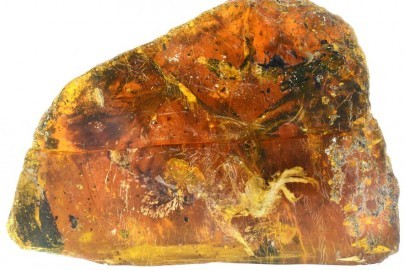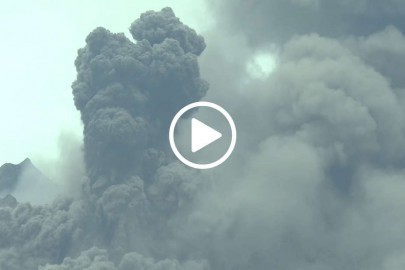A fiery meteor streaked across the Midwest sky early Monday morning, seen as far west as Nebraska and as far east as New York.
Unfortunately for scientists who would like to study where it came from and how it got here (although perhaps fortunately for people living in the vicinity), all of the surviving bits of rock plopped into Lake Michigan.
The American Meteor Society has received more than 350 reports from witnesses of the green fireball, which occurred around 1:25 a.m. local time. William B. Cook, a NASA meteor expert, reported in a email to NASA headquarters that the fireball originated about 60 miles above West Bend, Wis., moving about 38,000 miles an hour toward the northeast before disintegrating about 21 miles above Lake Michigan.
As the meteor fell apart, it emitted low-frequency sounds that were recorded in the Canadian province of Manitoba, about 600 miles away. The blast released energy that was equal to at least 10 tons of TNT, Dr. Cook said, suggesting that the object that entered the atmosphere was at least 600 pounds and two feet in diameter.
Most of the reports came from Wisconsin and Illinois.
Michael Hankey of the American Meteor Society said such fireballs happen every day somewhere, but only rarely — perhaps four a year — do they occur over populated areas of the United States where the light show can be captured by dashboard cameras, security cameras and night owls carrying cellphones.
“There were just a ton of videos,” Mr. Hankey said. “That was unique.”
Marc D. Fries, another NASA scientist, said that weather radar captured the shower of meteorites and that he was analyzing the data to estimate the masses of the meteorites and where they fell.
From the multitude of reports, scientists should be able to calculate the trajectory of the object, which most likely originated in the asteroid belt. (An asteroid is a rock orbiting in the inner solar system, usually between Mars and Jupiter. A meteor is the streak of light as an asteroid enters the atmosphere. A meteorite is an asteroid remnant that makes it to the ground.)
Philipp R. Heck, a scientist at the Field Museum of Natural History in Chicago, said the fireball seemed comparable to one that fell over a southern suburb of Chicago in 2003. Meteorites as heavy as several pounds hit the ground, some damaging homes. With the asteroid remnants, scientists could study the mineralogy in detail, even estimating how many million years it took for the asteroid to cross paths with Earth.
But it is unlikely that anyone will find pieces of Monday’s meteor. Mr. Hankey said the biggest meteorites were probably the size of baseballs, sunk in the sediments at the bottom of Lake Michigan.
“Good luck finding that,” he said.


































